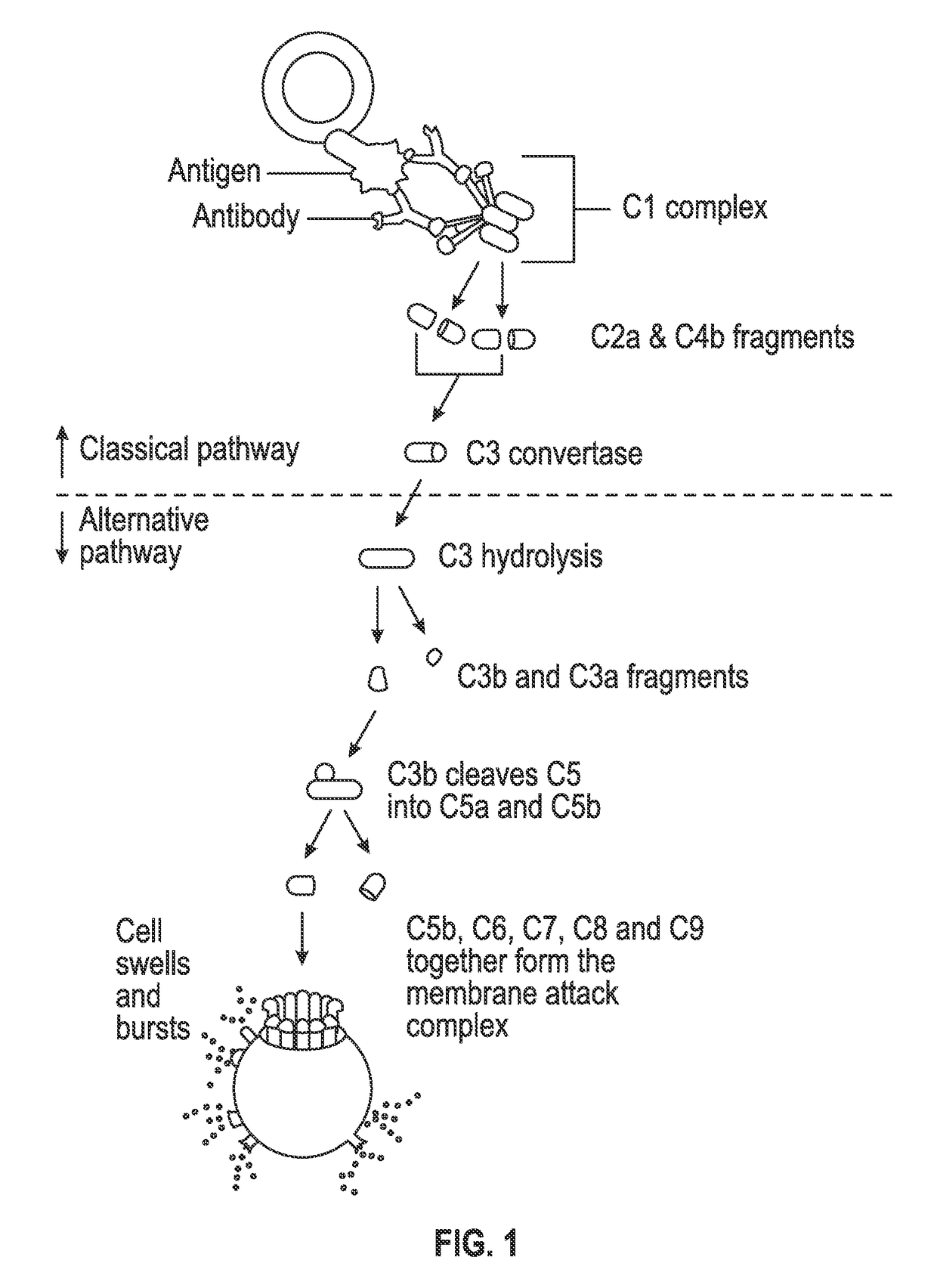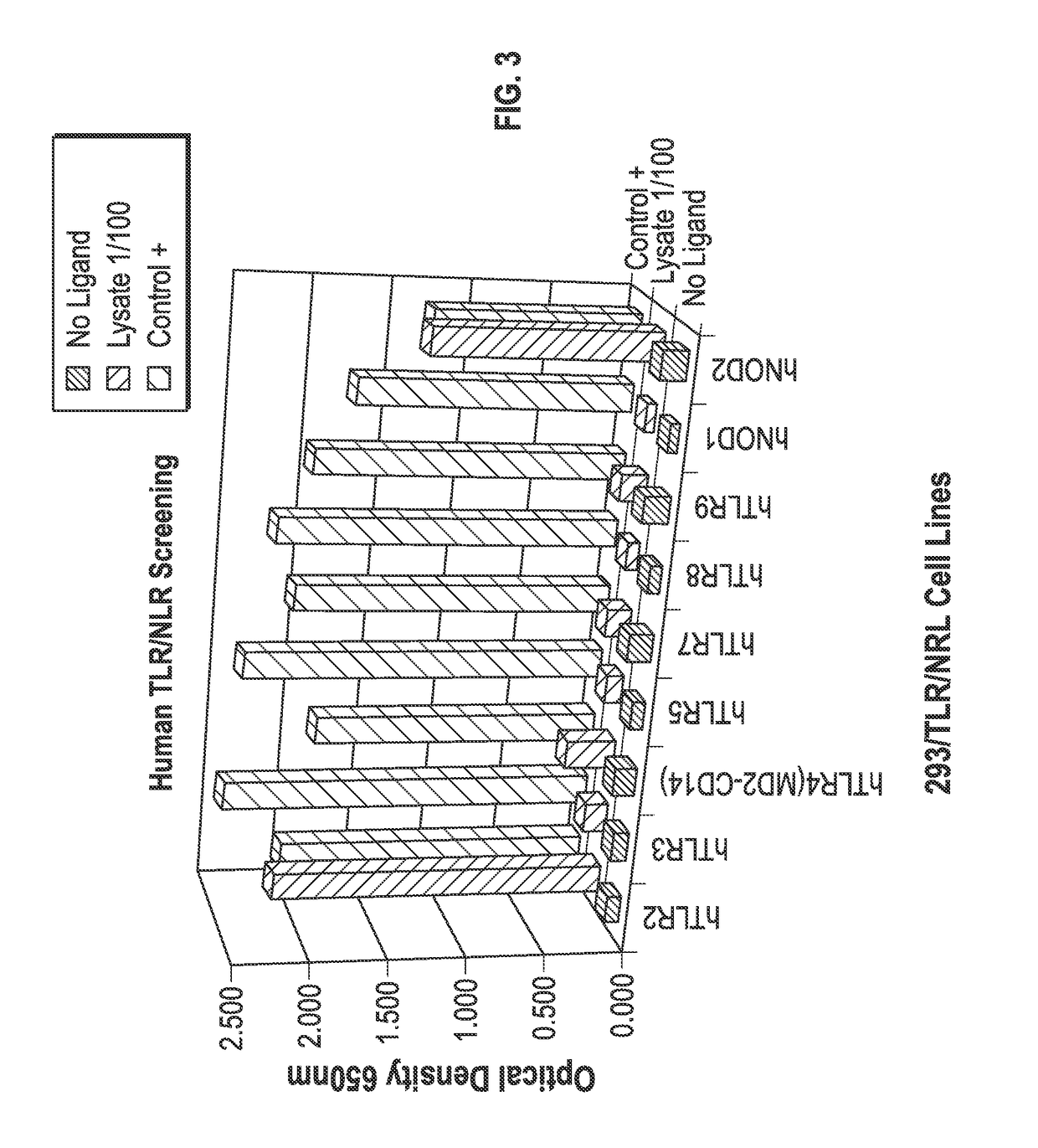Compositions and methods for the treatment of hepatic diseases and disorders
a technology for hepatic diseases and disorders, applied in the field of compositions for the therapeutic treatment of hepatic disorders, can solve the problems of cirrhosis of the liver, death, liver cancer, etc., and achieve the effect of enhancing the formation of one or more convertase enzymes
- Summary
- Abstract
- Description
- Claims
- Application Information
AI Technical Summary
Benefits of technology
Problems solved by technology
Method used
Image
Examples
example 1
Active Ingredient Composition Preparation
[0191]In order to prepare an exemplary formulation as described herein suitable for therapeutic testing and further cell line testing, such as in screening tests and subject testing.
[0192]Active Ingredient. The active ingredient is a gram positive bacteria, such as described herein above. In example, Lactobacillus delbrueckii, ssp. Bulgaricus was used, employing a fermentation and cell isolation process as carried out by Kerry Ingredients & Flavours (Beloit, Wis.) and as described generally below.
[0193]Fermentation. Cells of a gram positive bacteria, Lactobacillus delbrueckii subsp. Bulgaricus, was fermented in 500 L of an appropriate media for approximately 120 hours.
[0194]Cell Isolation. The 500 L of broth was centrifuged and the resultant cell mass was washed three times with DI water. This produced approximately 60 kg of wet cell mass.
[0195]Lysing and Purification. The wet cell mass was reconstituted and the pH is adjusted to 6.8-7.0. Lys...
example 2
TLR Screening
[0197]TLR stimulation was tested by assessing NF-κB activation in HEK293 cells expressing a given TLR or NLR. The activities of the samples were tested on seven different human TLRs: TLR2, 3, 4, 5, 7, 8 and 9 (Invivogen, San Diego, Calif.), and on two different human NLRs (NOD1 and NOD2). Each ligand was tested at a final concentration of 1 / 100 of the stock solution on the TLR or NLR cells, and compared to control ligands, as described below. This step was performed in triplicate.
[0198]The control ligands, control cell lines, and sample product used in the examples were as shown in Table 2.
[0199]
TABLE 2Control ligands and control cell line information used in ligandscreening tests.ControlTLR2: HKLM (heat-killed Listeria monocytogenes)Ligandsat 108 cells / mL.TLR3: Poly(I:C) at 1 μg / mLTLR4: E. coli K12 LPS at 100 ng / mLTLR5:TLR7: CL097 at 1 μg / mLTLR8: CL075 at 1 μg / mLTLR9: CpG ODN 2006 at 100 ng / mLNOD1: C12iEDAP at 10 μg / mLNOD2: L18-MDP at 100 ng / mLControl CellHEK293 / Null1:...
PUM
| Property | Measurement | Unit |
|---|---|---|
| particle size | aaaaa | aaaaa |
| particle size | aaaaa | aaaaa |
| molecular weight | aaaaa | aaaaa |
Abstract
Description
Claims
Application Information
 Login to View More
Login to View More - R&D
- Intellectual Property
- Life Sciences
- Materials
- Tech Scout
- Unparalleled Data Quality
- Higher Quality Content
- 60% Fewer Hallucinations
Browse by: Latest US Patents, China's latest patents, Technical Efficacy Thesaurus, Application Domain, Technology Topic, Popular Technical Reports.
© 2025 PatSnap. All rights reserved.Legal|Privacy policy|Modern Slavery Act Transparency Statement|Sitemap|About US| Contact US: help@patsnap.com



